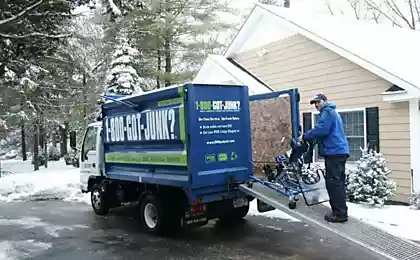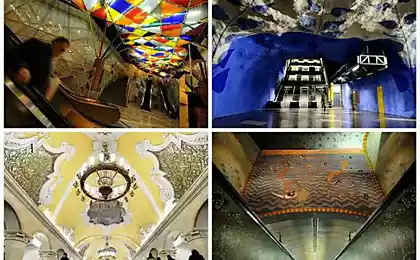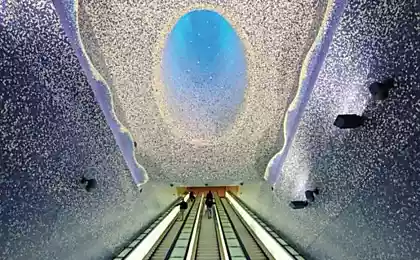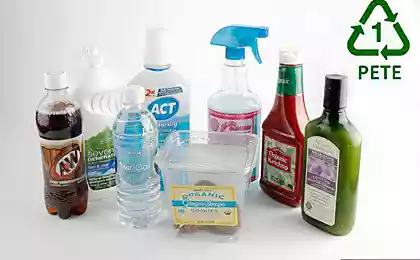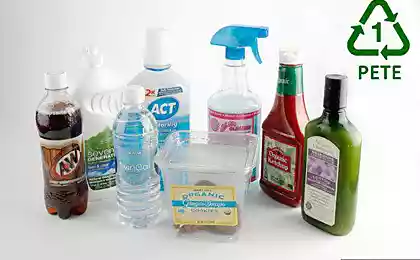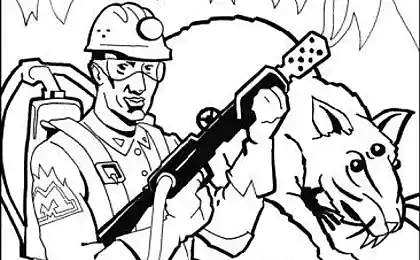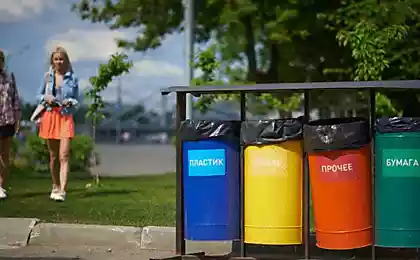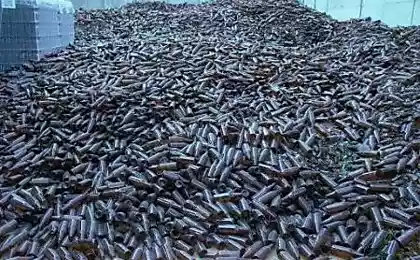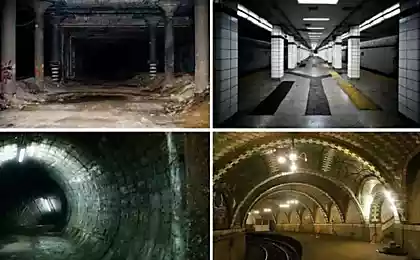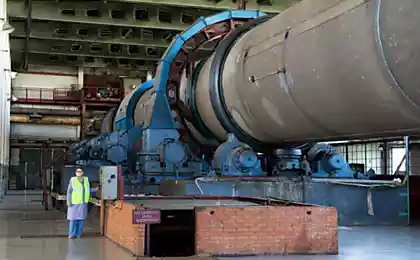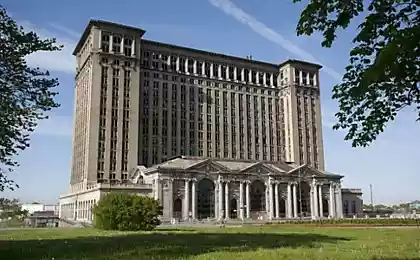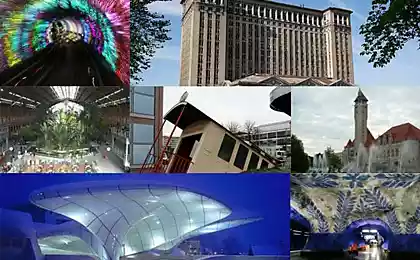302
Garbage sorting station in Rudno or sorted by hand
Rudno is a small village in the center of Poland. 19 gmina waste is processed here (Polish gmina is either a small rural area from villages or a city). Information about the station in Rudno is quite well presented on the Internet, so I planned to visit it in Minsk. A month earlier, I sent them a letter asking for a visit. How many such letters were sent is not counted. None of them came from Poland or Lithuania. It was a little exhilarating, but I thought I'd go and we'd figure it out. The trip should be an adventure.
To get to this station helped me the case, which happens so much in travel. The station director was familiar to Martin’s father, a cyclist I stayed with for the night in the nearby town of Ostroda. Martin knew the purpose of my trip and helped arrange the tour with the director. So everything turned out to be simple, pleasant and interesting.
The village of Rudno is located 15 kilometers from Ostroda. For the organization of the plant, Rudno was chosen because it is equidistant from the main “supplier cities”. This reduces transportation costs. The road to the village is lined with lime alleys and therefore it was incredibly pleasant to go on this hot day. Arriving in the village itself, I was even a little confused - nothing betrayed the presence of a landfill. Clean and quiet. There's no one to ask for directions.
I decided to choose the road with the best asphalt and after a few kilometers I realized that I was right. They were waiting for me on the pass, and almost immediately the station director Tomasz came to me. That’s what I loved about the Poles, because they don’t show off or fear: ‘Pan wants to see our station? No problem, come on!
So we started our tour.
ZUOK is a Polish waste management company.
The territory of the waste sorting station. On the left is a sorting line building. A new dump of unsorted garbage is on the horizon. An old landfill that has been growing for decades now. It is already closed and covered with earth.
The technological scheme was very simple. There is no hard-wired automation here, as in Elka, and manual labor is abundantly used.
Broken glass, collected in separate containers, falls into a separate pile and does not fall on the conveyor. It's not sorted by color. Such sorting is expensive and does not pay off - it is more profitable to sell mixed.
The waste sorting itself is carried out in the shop. There is equipment connected by conveyor lines:
All the rest of the garbage from the “dry” containers is dumped in the receiving bunker. Before transportation, it is not pressed, so it immediately enters the conveyor. It uses a bulldozer and human control.
Starting conveyor:
As in Elka, a large separation drum is first used. He removes small garbage, he does not want to mess with it, and there is little sense from it. The result of the separator:
The rest of the conveyor is fed into manual sorting rooms. Almost all sorting work is done by people:
Each operator selects one type of garbage and throws it into a "bottomless box"
Bunker under the box:
Bunker with colorless PET bottle:
Sorting is carried out sequentially in several stages:
Lunch break. Garbage is waiting for its fate.
Containers for rare garbage:
Toxic waste shall be disposed of:
The station has a single automated garbage sorting robot. Here, it is programmed to remove plastic bags, although it can be reconfigured to another type of garbage. The robot requires a lot of air and therefore its power is decent - 40 kilowatts.
The last stage of manual check - only paper remains on the tape:
It's a press tape. The tape is one - there are many types of received. The press is used in turn.
The press makes these bowls:
Products ready for shipment. According to Tomasz, for the sale of secondary resources manages to get only about 10 percent of the money required for the operation of the station. The rest is paid by the population for the provision of garbage disposal services.
The filtration system constantly diverts air from the workplace and filters it before it is removed into the atmosphere. Tomas was not too lazy to open one of them and show what was inside. Then, really, we both sneezed for a long time.
Automation in the shop, as I said, almost no. The distribution cabinet.
In the background is a huge dump of what can not be sorted:
Here, trucks are washed before their raids “for prey”.
Water after washing is cleaned and used again. You can't just pour it out like that.
New garbage collection containers ready to be shipped to cities:
The old dump is nearby. It is already closed and you could try to get biogas, but due to its relatively small size, the volume of gas produced will be small and sheepskin is not worth making. The methane is released into the atmosphere. But cosposting is more economically profitable and are found everywhere. We started building it in Rudno.
In general, the station was very simple, without bells and whistles and computer automation.
Pan Tomasz is a man, against the background of a stand with the coats of arms of those 19 gminas, which he makes cleaner.
Source: green-journey.com
To get to this station helped me the case, which happens so much in travel. The station director was familiar to Martin’s father, a cyclist I stayed with for the night in the nearby town of Ostroda. Martin knew the purpose of my trip and helped arrange the tour with the director. So everything turned out to be simple, pleasant and interesting.
The village of Rudno is located 15 kilometers from Ostroda. For the organization of the plant, Rudno was chosen because it is equidistant from the main “supplier cities”. This reduces transportation costs. The road to the village is lined with lime alleys and therefore it was incredibly pleasant to go on this hot day. Arriving in the village itself, I was even a little confused - nothing betrayed the presence of a landfill. Clean and quiet. There's no one to ask for directions.
I decided to choose the road with the best asphalt and after a few kilometers I realized that I was right. They were waiting for me on the pass, and almost immediately the station director Tomasz came to me. That’s what I loved about the Poles, because they don’t show off or fear: ‘Pan wants to see our station? No problem, come on!
So we started our tour.
ZUOK is a Polish waste management company.
The territory of the waste sorting station. On the left is a sorting line building. A new dump of unsorted garbage is on the horizon. An old landfill that has been growing for decades now. It is already closed and covered with earth.
The technological scheme was very simple. There is no hard-wired automation here, as in Elka, and manual labor is abundantly used.
Broken glass, collected in separate containers, falls into a separate pile and does not fall on the conveyor. It's not sorted by color. Such sorting is expensive and does not pay off - it is more profitable to sell mixed.
The waste sorting itself is carried out in the shop. There is equipment connected by conveyor lines:
All the rest of the garbage from the “dry” containers is dumped in the receiving bunker. Before transportation, it is not pressed, so it immediately enters the conveyor. It uses a bulldozer and human control.
Starting conveyor:
As in Elka, a large separation drum is first used. He removes small garbage, he does not want to mess with it, and there is little sense from it. The result of the separator:
The rest of the conveyor is fed into manual sorting rooms. Almost all sorting work is done by people:
Each operator selects one type of garbage and throws it into a "bottomless box"
Bunker under the box:
Bunker with colorless PET bottle:
Sorting is carried out sequentially in several stages:
Lunch break. Garbage is waiting for its fate.
Containers for rare garbage:
Toxic waste shall be disposed of:
The station has a single automated garbage sorting robot. Here, it is programmed to remove plastic bags, although it can be reconfigured to another type of garbage. The robot requires a lot of air and therefore its power is decent - 40 kilowatts.
The last stage of manual check - only paper remains on the tape:
It's a press tape. The tape is one - there are many types of received. The press is used in turn.
The press makes these bowls:
Products ready for shipment. According to Tomasz, for the sale of secondary resources manages to get only about 10 percent of the money required for the operation of the station. The rest is paid by the population for the provision of garbage disposal services.
The filtration system constantly diverts air from the workplace and filters it before it is removed into the atmosphere. Tomas was not too lazy to open one of them and show what was inside. Then, really, we both sneezed for a long time.
Automation in the shop, as I said, almost no. The distribution cabinet.
In the background is a huge dump of what can not be sorted:
Here, trucks are washed before their raids “for prey”.
Water after washing is cleaned and used again. You can't just pour it out like that.
New garbage collection containers ready to be shipped to cities:
The old dump is nearby. It is already closed and you could try to get biogas, but due to its relatively small size, the volume of gas produced will be small and sheepskin is not worth making. The methane is released into the atmosphere. But cosposting is more economically profitable and are found everywhere. We started building it in Rudno.
In general, the station was very simple, without bells and whistles and computer automation.
Pan Tomasz is a man, against the background of a stand with the coats of arms of those 19 gminas, which he makes cleaner.
Source: green-journey.com
The world's largest "indoor farm" produces 10,000 heads of lettuce per day
A graduate student from Tomsk has developed a system of handwriting recognition keyboard
